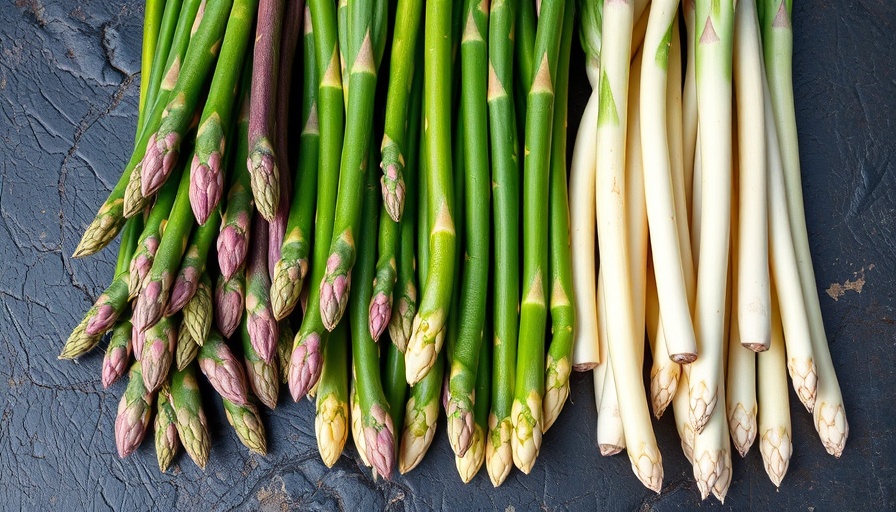
Unlock the Secrets of Homegrown Goodness: The Asparagus Renaissance
Asparagus, or Asparagus officinalis, is more than just a vegetable; it’s a symbol of spring's arrival and a staple in organic gardening. For those in climate zones 3 to 10, raising asparagus offers a rewarding experience that can yield delicious returns for decades. Imagine strolling into your garden come spring, where towering green stalks await your delight. This guide shares 15 of the best asparagus varieties to grow at home, each promising its own unique flavor profile and advantages.
Explore the Best Varieties of Asparagus
Whether you’re a seasoned home gardener or just starting out, you'll want to consider these top choices for the best asparagus varieties to cultivate in your backyard:
- Apollo - Early-maturing with smooth green spears and tight purple tips, known for its rich flavor.
- Jersey Giant - A favorite among gardeners, this variety is known for its big, tender spears and high yield.
- Mary Washington - Classic and robust, it's ideal for home gardens and produces tender spears.
- Purple Passion - This variety boasts a sweet flavor and a distinctive purple color that turns green when cooked.
- UC-157 - Known for its disease resistance and high productivity, it’s perfect for those in warmer climates.
These varieties not only enhance culinary dishes but also come with unique growing requirements and harvest times, allowing gardeners to strategically plant them for a continuous supply throughout the season.
Understanding the Science Behind Asparagus Cultivation
Asparagus is a dioecious plant, meaning it has separate male and female plants. The male plants generally produce more spears, enhancing yield. However, many gardeners appreciate female plants for their seeds and unique flavors. This opens up a dialogue about biodiversity and heirloom varieties, which, despite their lower yields, can offer distinct tastes that grocery store asparagus lacks.
While white asparagus is often coveted in gourmet kitchens, it’s worth noting that its color results from blanching—an intentional process where sunlight is restricted to prevent chlorophyll production. Thus, passionate gardeners can experiment with this technique for a culinary twist in their gardens.
Improving Your Asparagus Garden: Practical Tips and Techniques
Successful asparagus cultivation hinges on suitable soil and climate conditions. Here are some strategies to help enhance your growing experience:
- Soil Preparation: Asparagus thrives in well-draining, sandy loam enriched with organic matter. Before planting, amend your soil with compost and ensure a slightly acidic pH.
- Sunlight: Position your asparagus bed in full sun for optimal growth. If you live in a warmer climate, consider using shade gardening techniques during the hottest months.
- Water Management: Established asparagus plants are drought-tolerant but initially require consistent watering. Mulching can help retain moisture and suppress weeds.
Incorporating these gardening hacks not only improves yield but also ensures pest-resistance, aiding in the sustainable growth of this perennial vegetable.
The Emotional Connection: Sharing Asparagus Harvests
Growing your own asparagus isn’t just about the food; it’s about community and connection. Imagine the joy of sharing fresh spears with neighbors, or including them in family dinners where everyone appreciates the labor of love that brought them to the table. This journey of cultivation and care fosters camaraderie among fellow gardeners and friends alike.
Final Thoughts: The Asparagus Experience Awaits
If you're looking for a perfect blend of sustainability and deliciousness, growing asparagus is your answer. With varieties such as Jersey Knight and Millennium, your garden can become a powerhouse of flavor and nutrition. Begin your journey today, and embrace all that home-grown asparagus has to offer!
 Add Row
Add Row  Add
Add 




 Add Row
Add Row  Add
Add 

Write A Comment